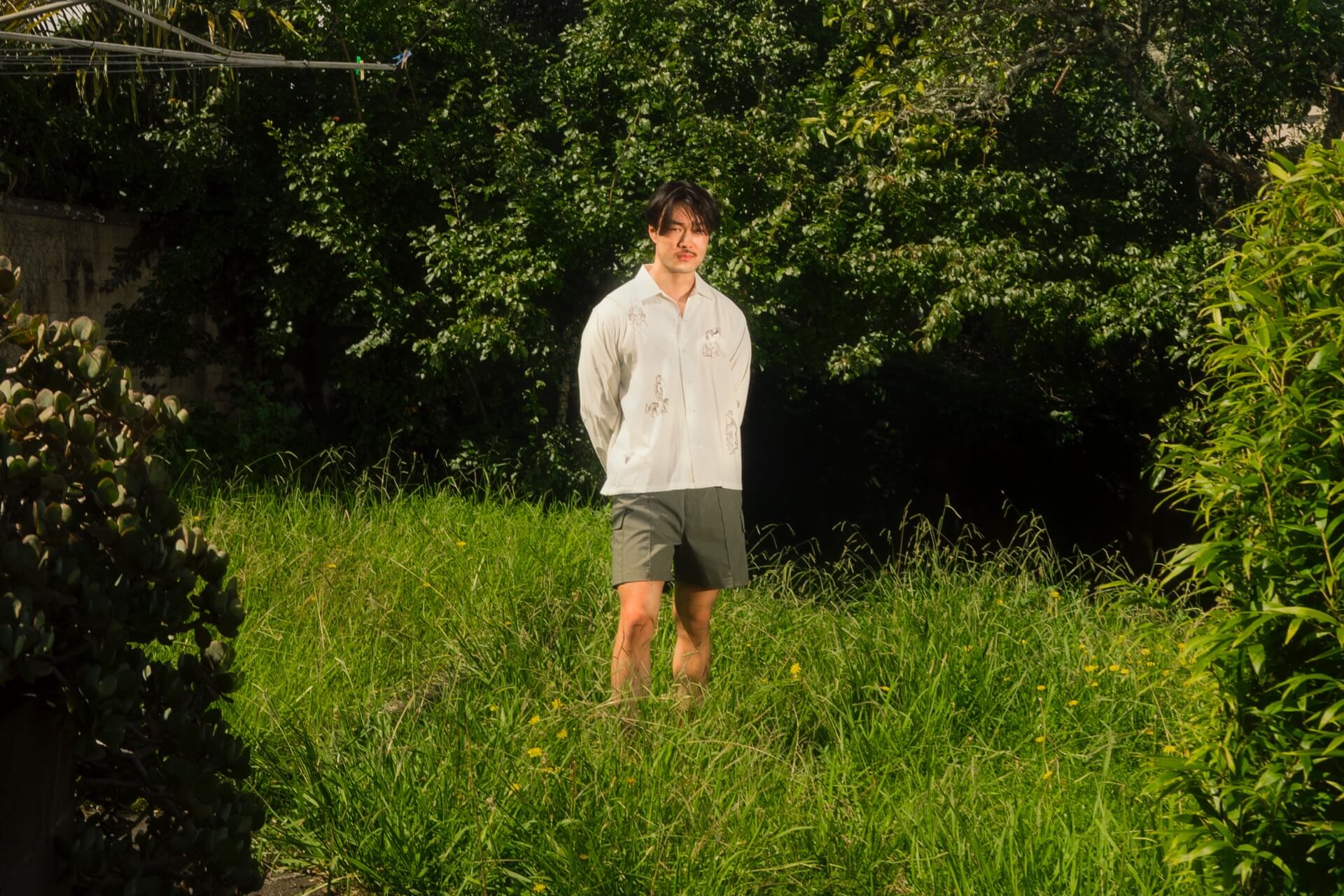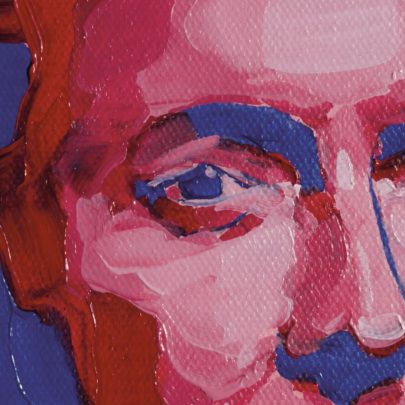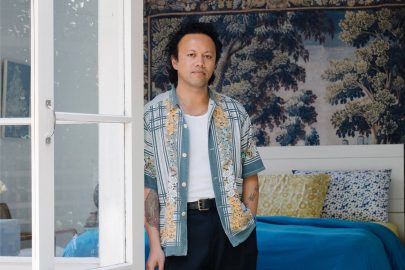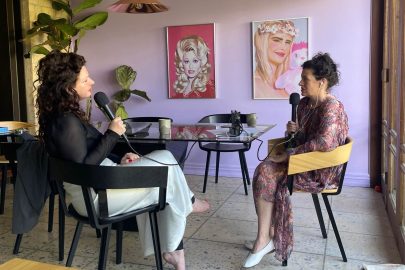Jul 4, 2023 Fashion
SUPREME X AKIRA TEE
I got really into fashion maybe about 2015, 2016. I think that’s when Instagram started blowing up, when fashion influencers were becoming a thing as well. A lot of streetwear was exploding at the time — Supreme and Palace, especially. I just hopped on and rode the wave. Soon enough, I found that I was actually really interested in the stories behind the clothes, and I became obsessed with reading about and watching YouTube videos on designers. I went deep into the rabbit hole.
This is a Supreme shirt that’s a collab with Akira, the manga. It’s the last vestige of my old life, back in 2016, when I first started selling clothes as one of those shitty resellers who would just buy things to flip — when I viewed clothes solely as a financial commodity. It’s the only thing I’ve kept from that era of my style. People always ask me, “Oh, where the fuck is that from?” It’s an expression of what I was into grow- ing up — you know, I watched a lot of anime, read a lot of manga. Still do. The cultural influence of Akira as a medium is undeniable.
Avery Trufelman does this podcast about clothes called Articles of Interest where she talks about Ivy style and American white-collar prep, and how the biggest export of post-war Japan wasn’t electronics or anything like that, but this notion of ‘cool’. Japanese culture seems to take Western ideals that were seen as either really boring or a symbol of some bygone era and reinterpret them into something with a bit more cultural capital — into a cool product, into something desirable. I think that’s really interesting.
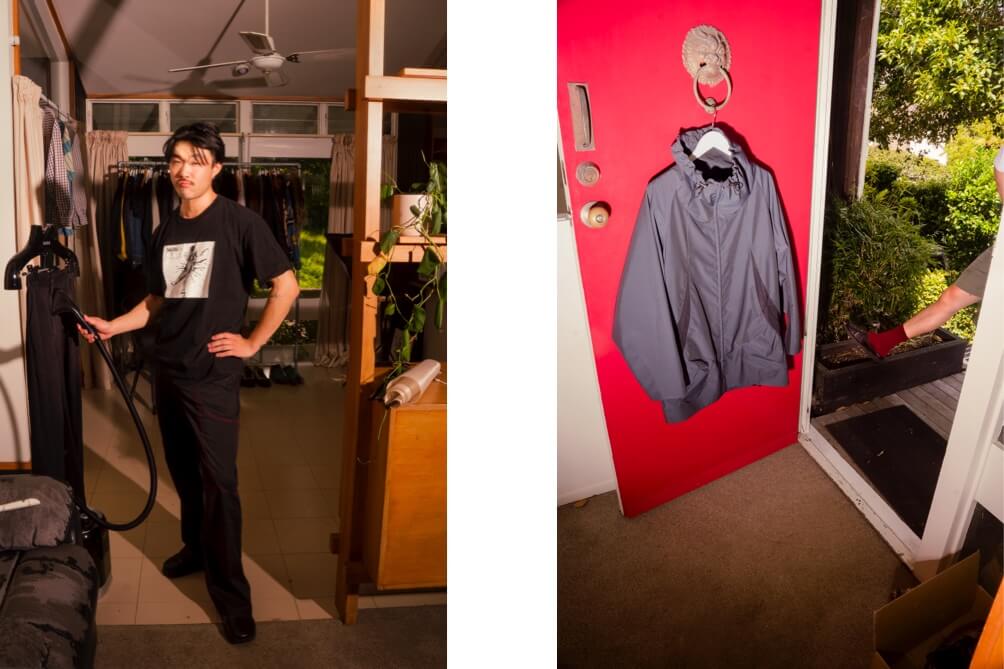
Supreme Akira Tee + Kiko Kostadinov jacket
KIKO KOSTADINOV JACKET
During my first year of uni, I started an account that was a pisstake of people who were making Instagram reselling pages and dumping their shitty old Glassons clothes on to them. I called it Mitchell’s Rubbish Bin and pretended to sell shit. Then that pivoted in 2020 when I was like, “Huh, maybe I could actually try and use this to properly sell things.” It felt like a niche — selling second-hand designer menswear — that New Zealand was missing at the time.
Initially, a lot of the clothing I sold was via proxy, online from Japan. In the last year and a half, I’ve sold a lot on consignment — people come to me to help them sell things. It’s kept things really local, and there’s this kind of ecosystem where the clothes just end up going around and around. It’s very circular, which I thought was cool. It’s also started to span generations — I’ve got older people coming to me with things they’d been collecting before I was even born, and vice versa.
The things that I consume personally, as opposed to things I consume for the store, can be very different. It’s not always a reflection of my personal style — it’s more a reflection of my interest. I find when I’m researching and buying for the store, there’s a lot of interesting narratives in the clothes. I see it as an educational thing, too, where with the content I push out, I like to go, “Hey, these are some of the things you might not consider if you saw this just as a garment.” But if you think about the intricacies, or the inspiration, or what has led us up to the point of this item being something that someone has produced — those are the things that fascinate me. That’s what I gravitate towards selling.
Buying this jacket was the most money I’ve spent on a garment in a really long time. [Kiko Kostadinov] is definitely my favourite designer and has been for quite some time. I like the product that he puts out, and his social media presence is very funny — he always calls out brands for copying him.
His designs are really weird. He has unconventional tailoring, which is interesting to see in menswear garments. I found out about him in 2018, when I was watching a lot of fashion media and clothing hauls through YouTube. I did some writing for a friend’s blog about up-and-coming designers, and I talked about how Kiko was going to be massive soon. Which he is at the moment. It was one of the first times I recognised a designer and could understand why people would enjoy the clothing — from both a technical aspect and a narrative aspect. This is the first piece I’ve bought — second-hand by the way — that wasn’t a t-shirt. His garments are prohibitively expensive.
BODE SHIRT
I’m a doctor and I work at Middlemore Hospital. Being a doctor is quite different from everything else I have going on
— specifically running Rubbish Bin. It’s nice to have another preoccupation to come back to after a long day of work. Something that can distract from work as well. Work consumes people, especially in the medical field. The idea of that is terrifying.
It’s funny, I wear button-up shirts every day for work, obviously, and there was a part of me that at one point was like, “Fuck, I wear button-ups all the time. I never want to wear a button-up again outside of work.” This is an exception, obviously. This designer [Emily Adams Bode] is really into heritage and vintage, repurposing historically significant textiles. Instead of finding a vintage one-out-of-one product, she makes her own one-out-of-one garments using vintage. This one I got on sale, and is one of the more mass-market ones. They’re usually very expensive. She took inspiration from Mediterranean immigrants arriving in America and starting cafes and restaurants where they’d hand-draw their own menus. It pays reference to old Greek and Roman mythologies, obviously, and they’re all hand-drawn graphics, which I like.
I think this brand, in particular, was one of the main sources which helped shift focus to more artisanal processes, to embracing the idiosyncrasies you get from these slow, meticulous, hand-made pieces. Things aren’t always perfect but that’s the charm of it.
A lot of these clothes aren’t significant to me personally, but they’re purchases where I consciously thought about the designer and why I like them. I’m a bit self-conscious about the fact I don’t want to be like, “Hey, look at all this money I’ve spent on stupid materialistic things” — a flexing culture, almost. But at the same time, I don’t really have a sentimental connection to my clothes anymore, because I end up selling things so often. I’m always consciously thinking when I buy something, “Oh, will this hold its value?”
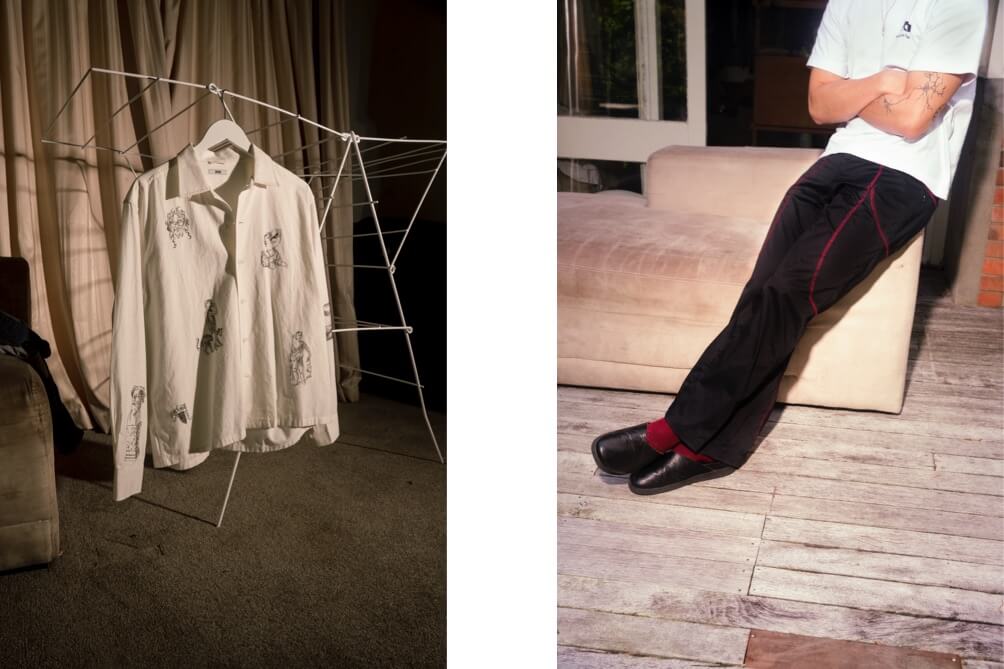
Bode shirt + Rubbish bin pants
I’m doing some shameless self-promotion. These are the second sample of a pair of pants I’m making under Rubbish Bin, and it’s the first time I’m making a cut-and-sew garment.
I was working at a GP practice in the Coromandel and was bored as fuck. I was sketching these pants in the back of a notebook and was like, “What if I just made these?” My mates run a company that helps with manufacture for a number of small New Zealand brands, and I gave them a sketch. I told them I wanted these to be made in China. There’s this really bad preconception that everything made in China is of bad quality. It’s like, “Oh, I’m going to pay $800 for these pants, and they’re made in China? Why the fuck would I pay that much for something made in China?” I’ve read about how the idea of things ‘Made in China’ being bad quality is a racist stereotype that stems from Cold War America trying to promote their domestic industry when there was massive industrialisation going on in the East. The thing about China is that, these days, it’s not actually that cheap to make things there. But it is ruthlessly efficient. In Shenzhen, there is this whole town that’s all factories just dedicated to making counterfeit paintings. There’s obviously a level of craftsmanship. Like, the factory these pants are made in, they just make pants. In New Zealand, especially with menswear, it’s a bit hit-or-miss. The quality control becomes impossible; you get wildly varying products.
This is the first time I’ve ever created anything from scratch. Everything is to my own personal specs. I got to control everything about it.
FORTNITE CAP
Last of all, my prized possession. I just wanted something a bit more tongue-in-cheek — at the end of the day, clothes are just pieces of fabric that you wear, and it’s okay for them to be a bit fun sometimes.
I got this in Bali, when I was really sick with food poisoning. My friends dragged me out of the villa, and I went crawling around in the markets, completely fixated on the idea of “I really want a Fortnite hat”. I don’t even know why. I just thought it’d be funny to have — like the idea of an item of desire being something really shitty and counterfeit.
We kept finding your fake Gucci, adidas, basket- ball jerseys. Then we found this. It was the only hat the guy had. There’s a big bartering culture there but he was like, “Ten New Zealand dollars.” And I was like, “Fuck it, I’m done.” I’m sick. I’m hot. I’m sweaty. I wanted this hat. I do get weird looks when I wear it out. I don’t even play, really.
People tend to take this kind of thing way too seriously, trying to curate an image of things being more important than they are. That’s why when people come to me and they’re like, “Bro, I don’t have enough money to buy this, but can I just pay you next week? I really want it”, I’m like, “Come try it on and make sure you actually want it.” A piece of clothing shouldn’t be the thing you spend all your money on. Food is way better than clothes. I’d rather eat well than dress well, to be honest.
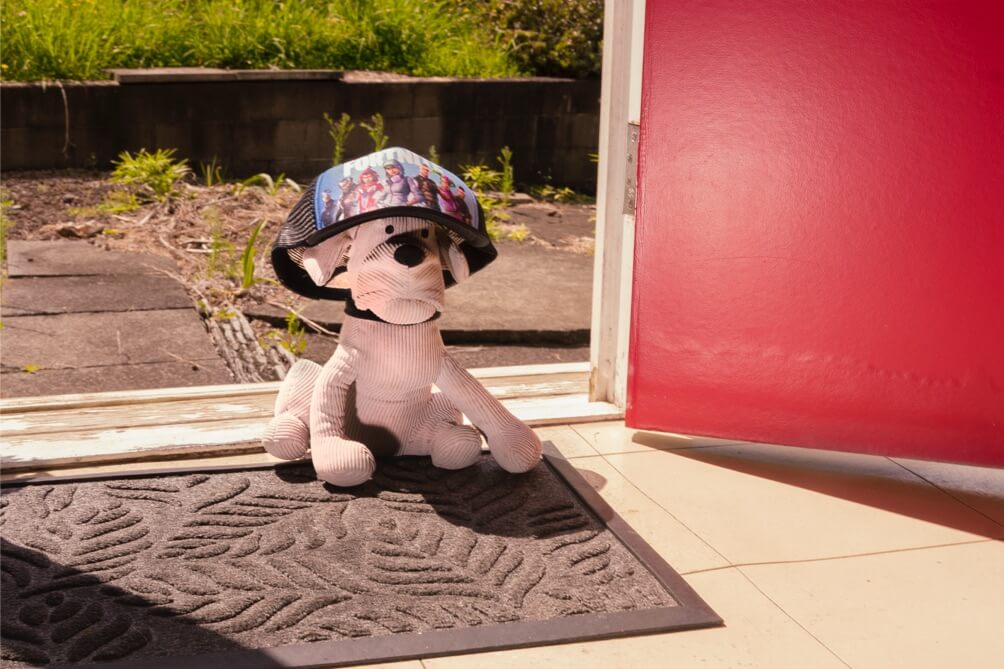
Fortnite cap
–

